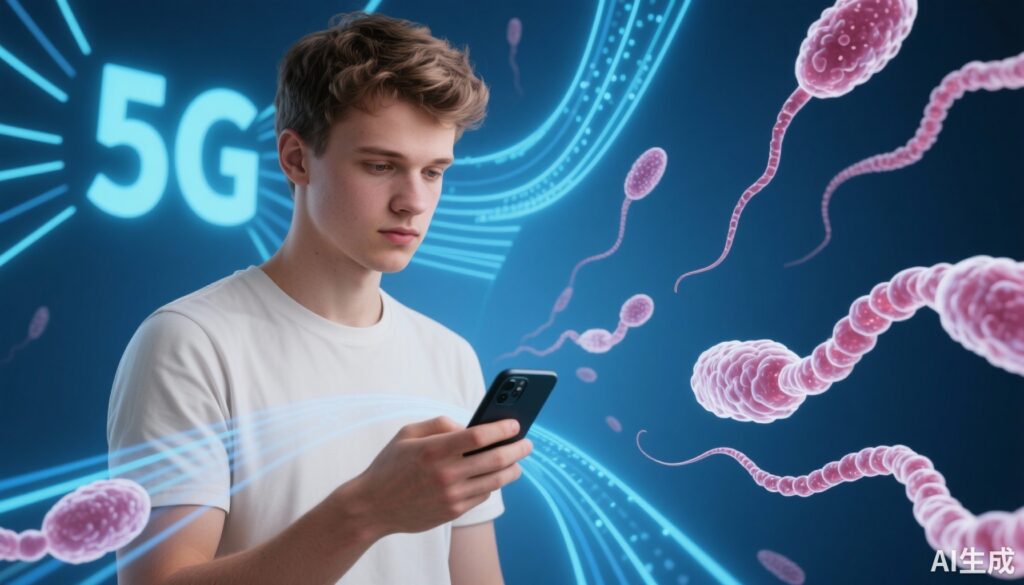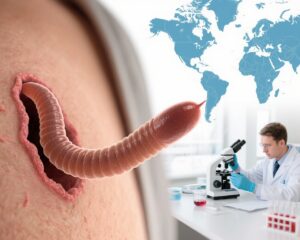Introduction
In the digital age, smartphones have become indispensable companions, constantly within arm’s reach or pocket. Among the revolutionary technologies fueling their capabilities, 5G wireless networks promise lightning-fast connectivity and seamless data transfer. However, alongside these advancements arise questions about the health implications of chronic exposure to radiofrequency radiation (RFR) emitted by these devices. In particular, concerns regarding male reproductive health and fertility have gained attention following a recent study by the Chinese Air Force Medical University investigating the effects of 5G phone radiation on sperm quality.
Historically, the idea that carrying a phone in one’s pocket could harm fertility was often dismissed as myth. Yet, new experimental evidence suggests this claim may warrant serious reconsideration. This article explores the emerging data on 5G RFR and its potential impact on male reproductive parameters, situates this within the broader context of declining sperm quality worldwide, and discusses practical approaches to mitigate risks while embracing technological progress.
Scientific and Clinical Evidence: What Do the Data Tell Us?
The pivotal study led by researchers from the Department of Military Preventive Medicine at the Chinese Air Force Medical University recently published in Chinese Journal of Radiation Hygiene sheds light on the biological effects of 5G radiation exposure at frequencies relevant to actual mobile communication.
Researchers selected 48 healthy male mice aged 7-8 weeks—equivalent to human adults aged 20-30 years—and divided them into three groups: a control group receiving no radiation, a group exposed to 3.5 GHz frequency radiation, and another exposed to 4.9 GHz, representing the primary frequencies used by 5G networks in China. The mice underwent daily radiation exposure for one hour over a continuous 42-day period.
Post-exposure assessments focused on sperm parameters, testicular tissue integrity, mitochondrial function, and overall fertility outcomes. Despite no significant differences in sperm count among groups, the irradiated mice exhibited striking declines in sperm motility, with active sperm dropping to as low as 4%. More alarmingly, sperm morphological abnormalities or deformities rose sharply to approximately 40% compared to controls.
Interestingly, the capacity of mice to reproduce, such as litter size and offspring survival, did not show significant immediate changes, highlighting that sperm quality alterations might precede observable effects on fertility.
Although animal models cannot be directly equated to human outcomes, these findings provide the first concrete evidence that exposure to 5G frequencies can adversely influence fundamental reproductive parameters.
Global Decline in Sperm Quality: A Broader Crisis
Beyond electromagnetic radiation, the declining quality of male sperm is a multifaceted global health challenge. The World Health Organization (WHO) reports that human sperm concentration worldwide has decreased by over 50% in the last four decades, a trend alarming in its scale and implications for population health.
This widespread deterioration is attributed to complex and interrelated factors including environmental toxins, lifestyle changes, psychological stress, elevated scrotal temperatures, sedentary behaviors, poor sleep hygiene, and increasingly pervasive exposure to electromagnetic fields from electronic devices.
While 5G radiation may represent a newer contributor, it joins an array of modern pressures on reproductive health, emphasizing a need for greater awareness and proactive health measures.
Common Misconceptions and Harmful Behaviors
Public discourse frequently oscillates between outright dismissal and exaggerated fears regarding phone radiation and fertility.
Some persistent myths include:
- “Phone radiation is completely harmless.” While non-ionizing radiation like that from phones does not cause direct DNA breaks, it can still induce biological effects such as oxidative stress or mitochondrial dysfunction, as animal studies suggest.
- “Only high radiation doses matter.” Chronic low-level exposure, especially in close proximity such as carrying phones in the trouser pocket, may cumulatively impact sperm quality.
- “If fertility is unaffected now, there’s nothing to worry about.” Decreased sperm quality can be a latent risk factor for later reproductive difficulties or offspring health issues.
Furthermore, behaviors that exacerbate risks include:
- Keeping phones in front pockets next to testes for prolonged periods.
- Using phones extensively for calls without hands-free devices.
- Sleeping with phones near the body overnight.
Understanding these misconceptions is crucial for tailoring effective educational and preventive strategies.
Practical Health Practices to Protect Male Fertility
Acknowledging current lifestyle realities, completely avoiding electromagnetic exposure is implausible. Nevertheless, adopting precautionary measures can meaningfully reduce potential harms. Recommended practices include:
- Limit phone time near reproductive organs: Avoid carrying smartphones in pants pockets; opt for bags or jacket pockets instead.
- Use hands-free accessories: Employ headphones or speakerphone mode to minimize direct exposure during calls.
- Reduce duration of continuous phone use: Take breaks and avoid unnecessarily extended sessions near the body.
- Maintain general reproductive health: Engage in regular exercise, ensure adequate sleep, avoid heat treatments like hot baths, and manage stress.
- Environmental awareness: Minimize exposure to other sources of potential reproductive toxins such as smoking, pesticides, and excessive alcohol.
A holistic approach that integrates radiation safety within broader lifestyle improvements will yield the greatest benefits.
Expert Insights and Future Directions
Dr. Li Wei, a reproductive health specialist, summarizes the emerging evidence: “While definitive human studies are pending, animal data provide a cautionary signal that 5G radiation can induce sperm dysfunction. It’s an urgent call for larger clinical research and public awareness.”
Current regulatory standards for mobile phone radiation mainly target thermal effects and may not fully capture subtle, cumulative biological changes affecting sperm quality.
Research priorities must include longitudinal human cohort studies assessing real-world exposure and fertility outcomes, exploration of underlying molecular mechanisms such as oxidative stress and mitochondrial damage, and development of safer device technologies.
Case Scenario: Mark’s Concerns About Fertility and 5G Exposure
Mark, a 28-year-old software engineer, recently learned about concerns regarding smartphone radiation and male fertility. He frequently carries his 5G-enabled phone in his front pocket and often works late nights.
Although he and his partner plan to have children soon, Mark is worried whether his daily habits might affect his sperm quality.
After consulting with his physician, he was advised to move his phone away from his pockets, use hands-free devices, and adopt healthier lifestyle habits. Subsequent sperm analysis showed slight improvements after three months.
Mark’s story underscores how simple behavioral adjustments guided by emerging science can empower individuals to safeguard reproductive health without abandoning technology.
Conclusion
The rapid expansion of 5G technology brings unparalleled connectivity and convenience but also raises new health considerations. Animal studies from the Chinese Air Force Medical University reveal alarming declines in sperm motility and morphology following daily 1-hour exposures to 5G-relevant frequencies over 42 days.
While translating these findings directly to humans requires caution, they highlight the necessity for continued investigation and prudent risk management. The global trend of declining sperm quality demands comprehensive attention spanning environmental, lifestyle, and technological domains.
Ultimately, balancing technological progress with proactive health preservation will define the sustainability of our modern reproductive health. By staying informed and adopting practical protective measures, individuals can enjoy the benefits of 5G and digital life while minimizing hidden reproductive harms.
References
1. Li F, Zhang W, et al. Effects of 5G Mobile Phone Radiation on Male Reproductive Ability in Mice. Chinese Journal of Radiation Hygiene. 2023.
2. Levine H, Jørgensen N, et al. Temporal trends in sperm count: a systematic review and meta-regression analysis. Human Reproduction Update. 2017;23(6):646–659.
3. World Health Organization. WHO Laboratory Manual for the Examination and Processing of Human Semen, 6th Edition. 2021.
4. Aitken RJ, De Iuliis GN. On the possible origins of DNA damage in human spermatozoa. Molecular Human Reproduction. 2010;16(1):3–13.
5. Yakymenko I, Tsybulin O, et al. Oxidative mechanisms of biological activity of low-intensity radiofrequency radiation. Electromagnetic Biology and Medicine. 2016;35(2):186-202.



